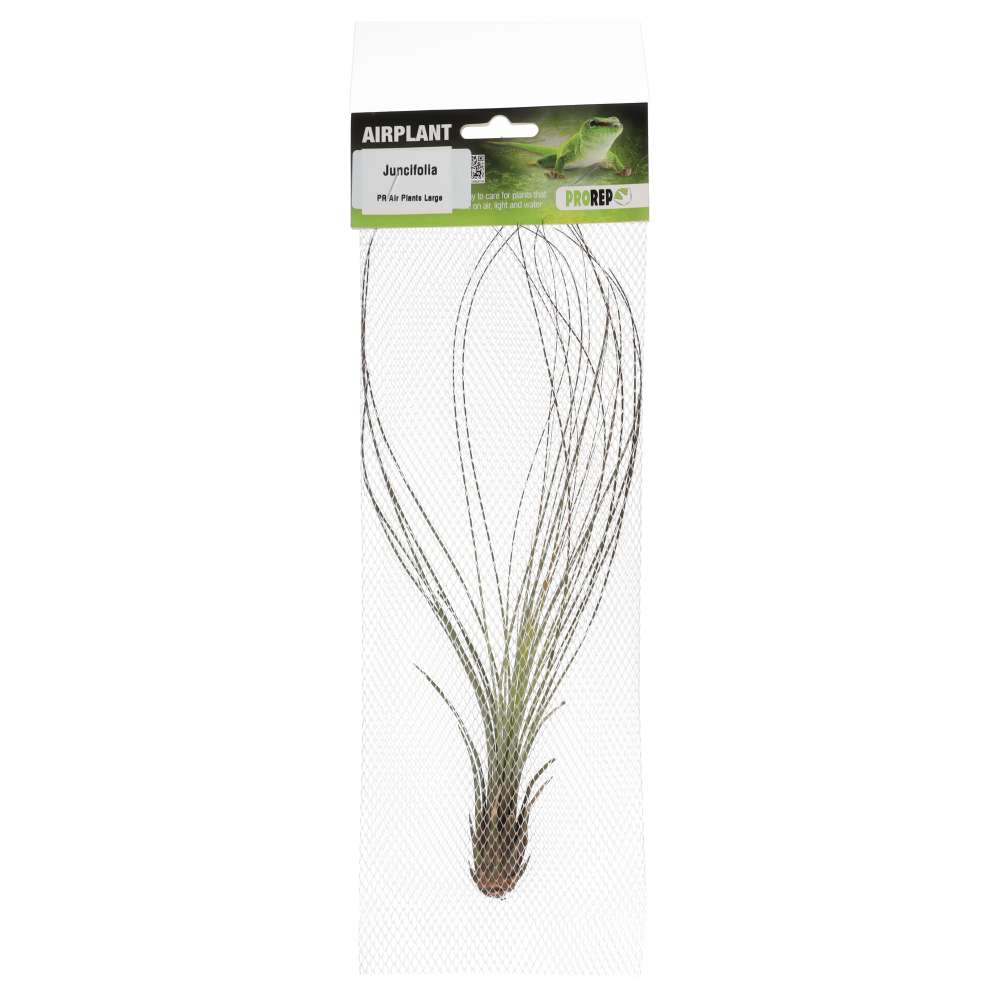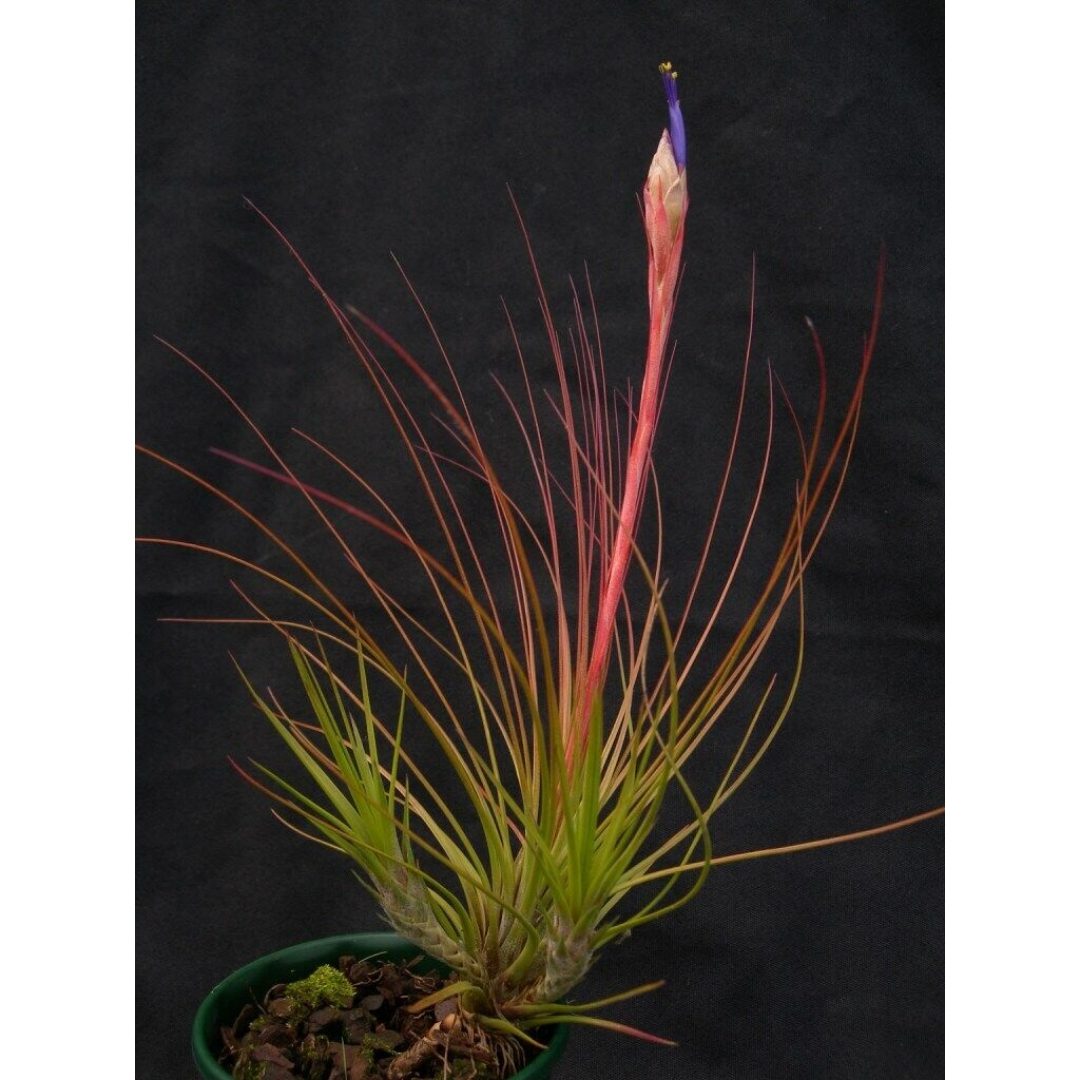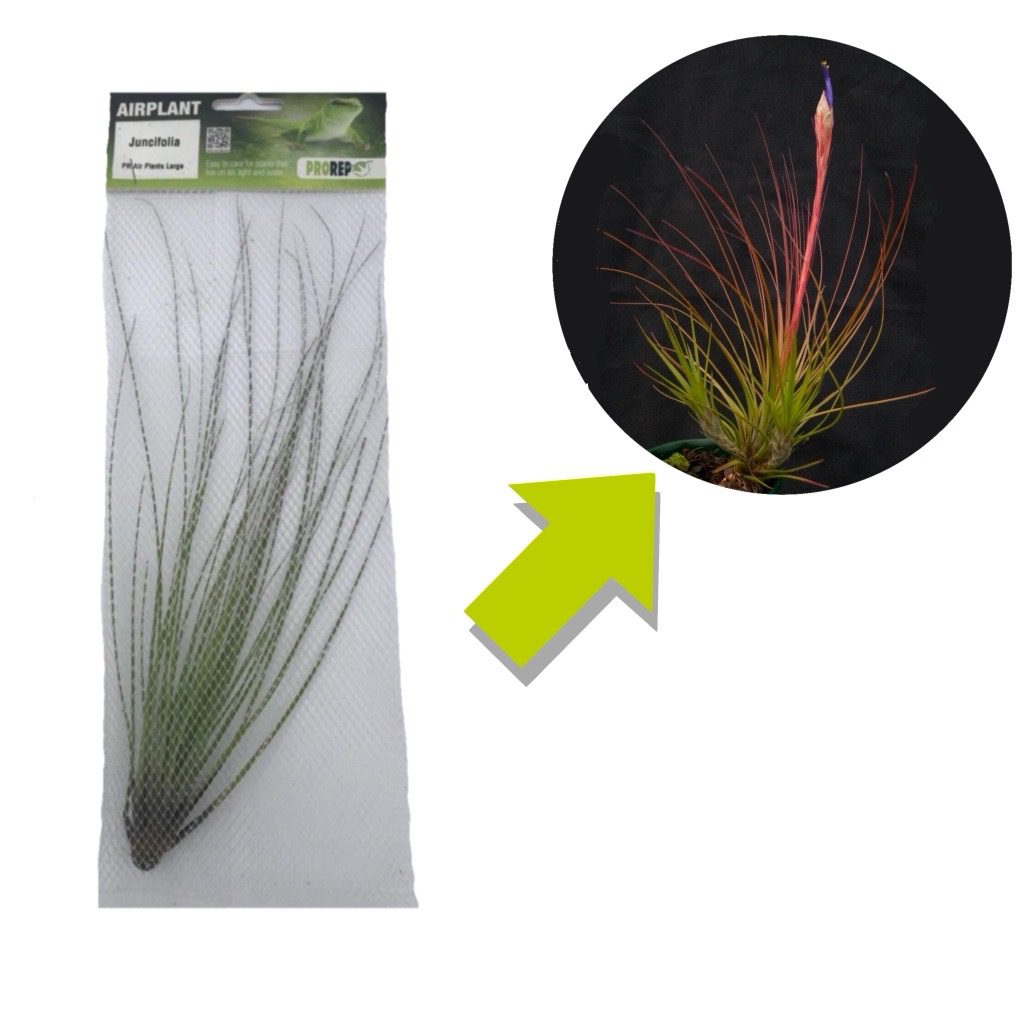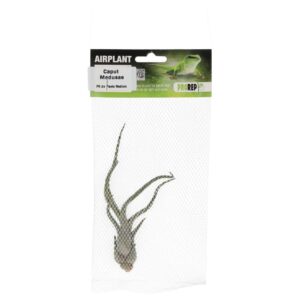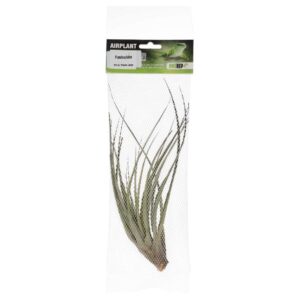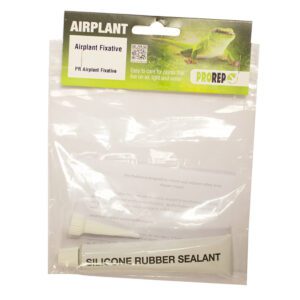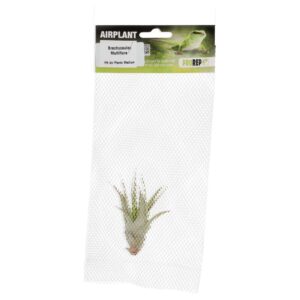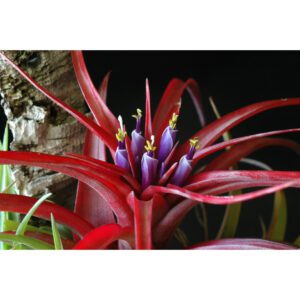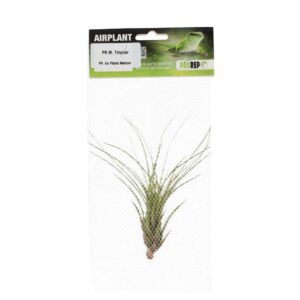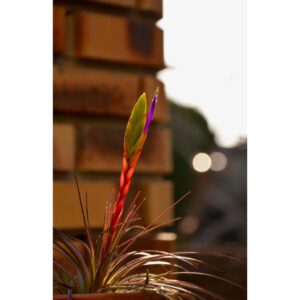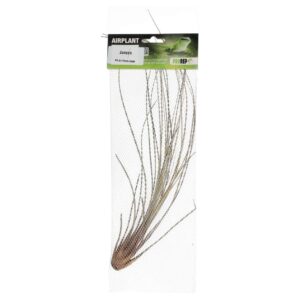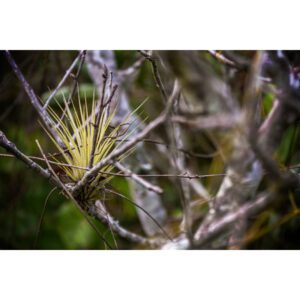Tillandsia juncifolia
Mature Appearance:
Forms a tight cluster of slender, upright leaves ~4–6 mm wide, reaching 15–20 cm in height.
Leaves are dark green to bluish, often with a faint sheen of silver trichomes.
Inflorescence: a tall, slender spike (15–20 cm) bearing orange/red bracts and purple flowers.
Life Cycle:
Blooming:
After 2–3 years; prominent, colourful spike emerges from centre.
Pups: 3–7 pups grow at the base; pups are slender and similar in form to the mother.
Mother Decline:
Mother stem slowly rots after pups detach, leaving pups to continue.
Enclosure Use:
Best Fit:
Large vertical or tall arboreal enclosures (e.g., chameleons, adult green tree pythons).
Ideal for planting on tall driftwood pieces or large cork backgrounds to fill vertical space.
The slender form adds architectural interest without overcrowding.
Care:
Light:
Bright filtered to moderate direct sun (300–600 µmol·m⁻²·s⁻¹).
Water:
Mist 3×/week; soak 20 min weekly.
Airflow:
Strong airflow is important to dry its central “funnel.”
Temps:
18–26 °C; do not drop below 15 °C.
Overview of Enclosure Placement & Compatibility
Arboreal Reptiles (Geckos, Tree Snakes, Chameleons):
Mount mid‐ to upper‐level on cork bark or natural branches—air plants stay dry at leaf tips and provide perches.
Paludariums (Dart Frogs, Newts):
Position so bases are above standing water but within mist zones; high humidity helps their growth and stability.
Terrestrial Reptiles (Small Tortoises, Skinks):
Generally, avoid placing air plants on floor substrate where they stay too wet. Instead, mount on vertical surfaces.
Nocturnal Reptiles (Crepuscular Geckos, Tree Frogs):
Many Tillandsias thrive in lower‐light understory conditions—select varieties like Ionantha scaposa or Brachycaulos multiflora that tolerate moderate light.
Basic Care Tips for All Tillandsias in Reptile Enclosures
Light:
Most need bright, indirect light; avoid full midday sun inside a glass vivarium to prevent heat buildup.
Watering:
Misting:
Use a fine‐mist sprayer; wet entire plant until beads form on leaves.
Soaking:
Remove and soak in dechlorinated, room‐temperature water. For large species (e.g., T. fasciculata), soak 20–30 minutes; smaller ones 10–15 minutes.
Frequency:
In a high‐humidity vivarium (≥70% RH), misting 2×/week may suffice. In drier rooms, mist 3–4 times weekly with a weekly soak.
Airflow: Ensure leaves dry within 4–6 hours to prevent rot. Use vent fans or leave enclosure slightly ajar after misting.
Temperature:
Most thrive between 18–28 °C. Avoid prolonged humidity with temperatures >30 °C, which can lead to fungal issues.
Fertilizer:
Optional use a bromeliad or tillandsia‐specific foliar fertilizer at ¼ strength once a month during active growth. Rinse thoroughly after to prevent residue.
Mounting & Display:
Attach using fishing line, thin wire, or ProRep Airplant Fixative (high‐temp silicone) to cork bark, rock, or driftwood. Do not use glue that can leach toxins.
Position so water does not pool in leaf rosettes—provide an angle or slight tilt to assist drainage.
By integrating these air plant species into your reptile vivaria, you create a more natural, three‐dimensional environment—offering climbing surfaces, humidity buffering, and visual interest—while providing minimal maintenance needs. Proper placement, regular but moderate watering, and good airflow will ensure your Tillandsias thrive alongside your reptiles.

